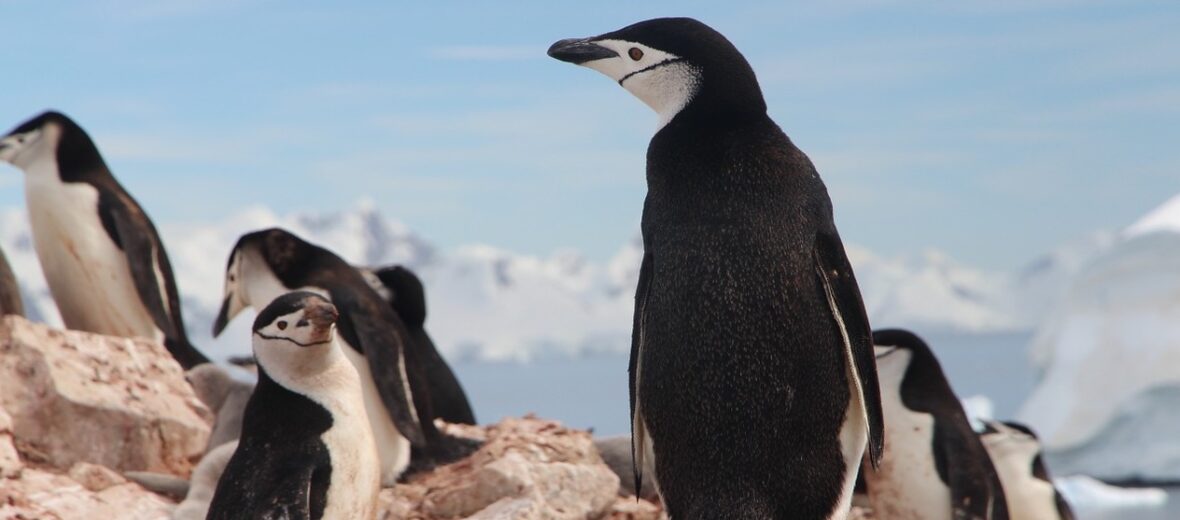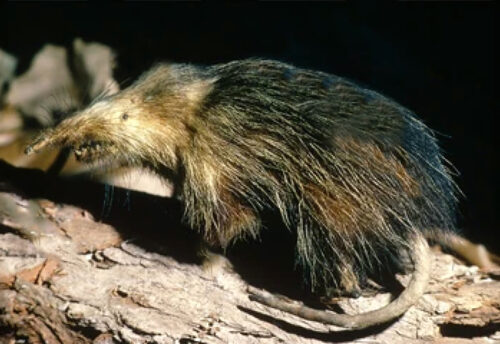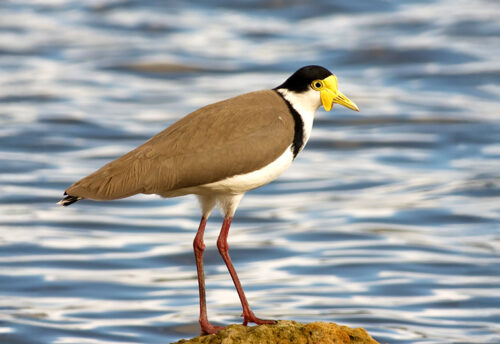
Touted as the most abundant of all penguin species, with a population of approximately 7.5 million breeding pairs, it’s the chinstrap penguin. Other aliases that these cute, but aggressive, critters go by are bearded penguin, ringed penguin, and stonecracker penguin (due to their harsh call), and other names. They prefer polar, shallow seas, as well as coastal areas. Chinstraps can be found in Bouvet Island, Antarctica, Argentina, Chile, the Falkland Islands, the French Southern Territories, South Georgia, and the South Sandwich Islands. Some vagrant (solo) individuals have been found in the islands of Saint Helena, New Zealand, Tristan da Cunha, and South Africa. There are more chinstrap penguins than all the other penguin species in the world combined.
First the Stats…
Scientific name: Pygoscelis antarcticus
Weight: Up to 11 lbs.
Length: Up to 30 inches
Lifespan: Up to 20 years
Now on to the Facts!
1.) Chinstrap penguins can dive to depths of 230 feet, but most dives are typically less than 150 feet.
2.) Their primary food of choice is small fish, krill, and squid.
3.) The chief predators are leopard seals and orcas. Their eggs are predated by sheathbills and brown skua.
4.) A recent study has found that leopard seals can take out up to 5% of a stonecracker’s breeding population in a single season!
5.) These cute but aggressive penguins have been known to swim up to 50 miles off shore to find food.
But wait, there’s more on the chinstrap penguin!
6.) All known 18 species of penguin are legally protected from hunting and/or egg collection. The Antarctic Treaty of 1959 makes it illegal to harm, or in any way interfered with, a penguin or its eggs. Every penguin specimen collected, even with a permit, must by approved by and reported to the Scientific Committee for Antarctic Research – S.C.A.R.
7.) They are able to tolerate swimming in freezing water due to their tightly packed feathers, that provide a waterproof coat. Thick blubber deposits also provide insulation as well. Specialized blood vessels in the flippers and legs have also evolved to help preserve heat.
Did you know…?
These critters can swim at speeds of up to 20 mph.
8.) Most of these penguin’s dives only last between 20 – 30 seconds.
9.) The male and female participate in rearing the young and building their nest.
10.) The parents to be will build a circular nest from stones and the female will birth up to 2 eggs that are incubated by mom and dad in 6 day intervals for up to 37 days.
Now a Short Chinstrap Penguin Video!
Also, check out the Critter Science YouTube channel. Videos added frequently!
Want to suggest a critter for me to write about? Let me know here.



